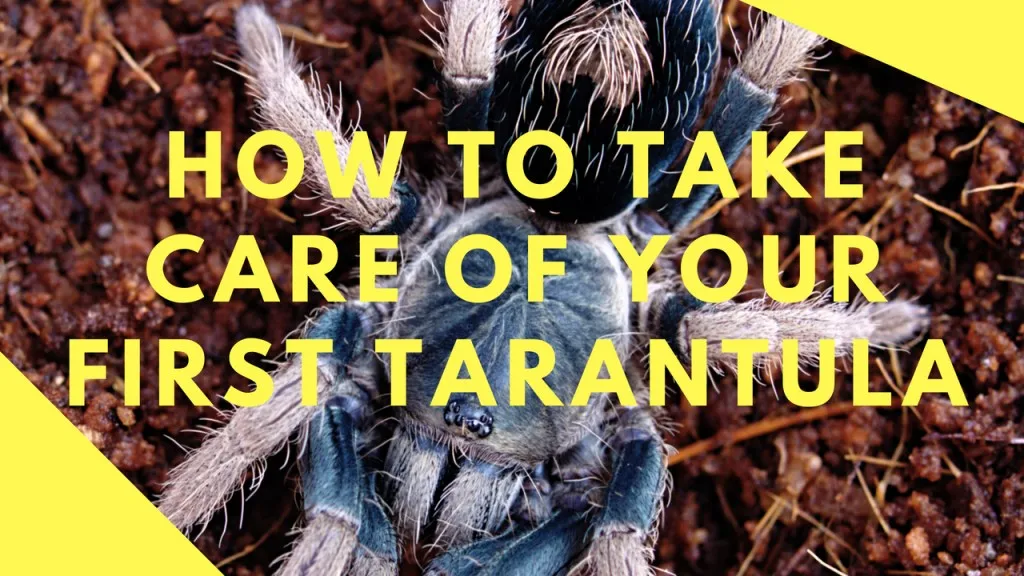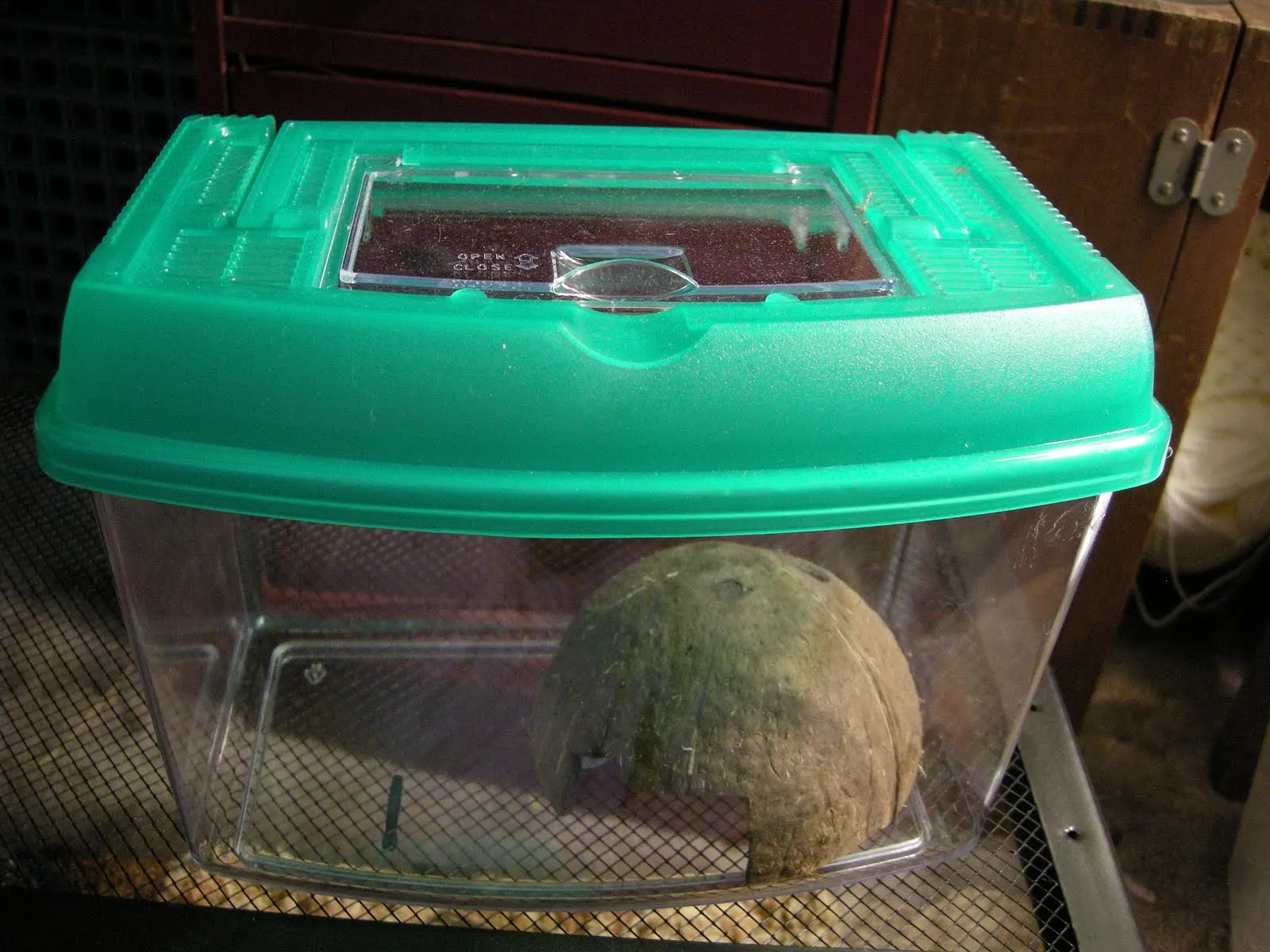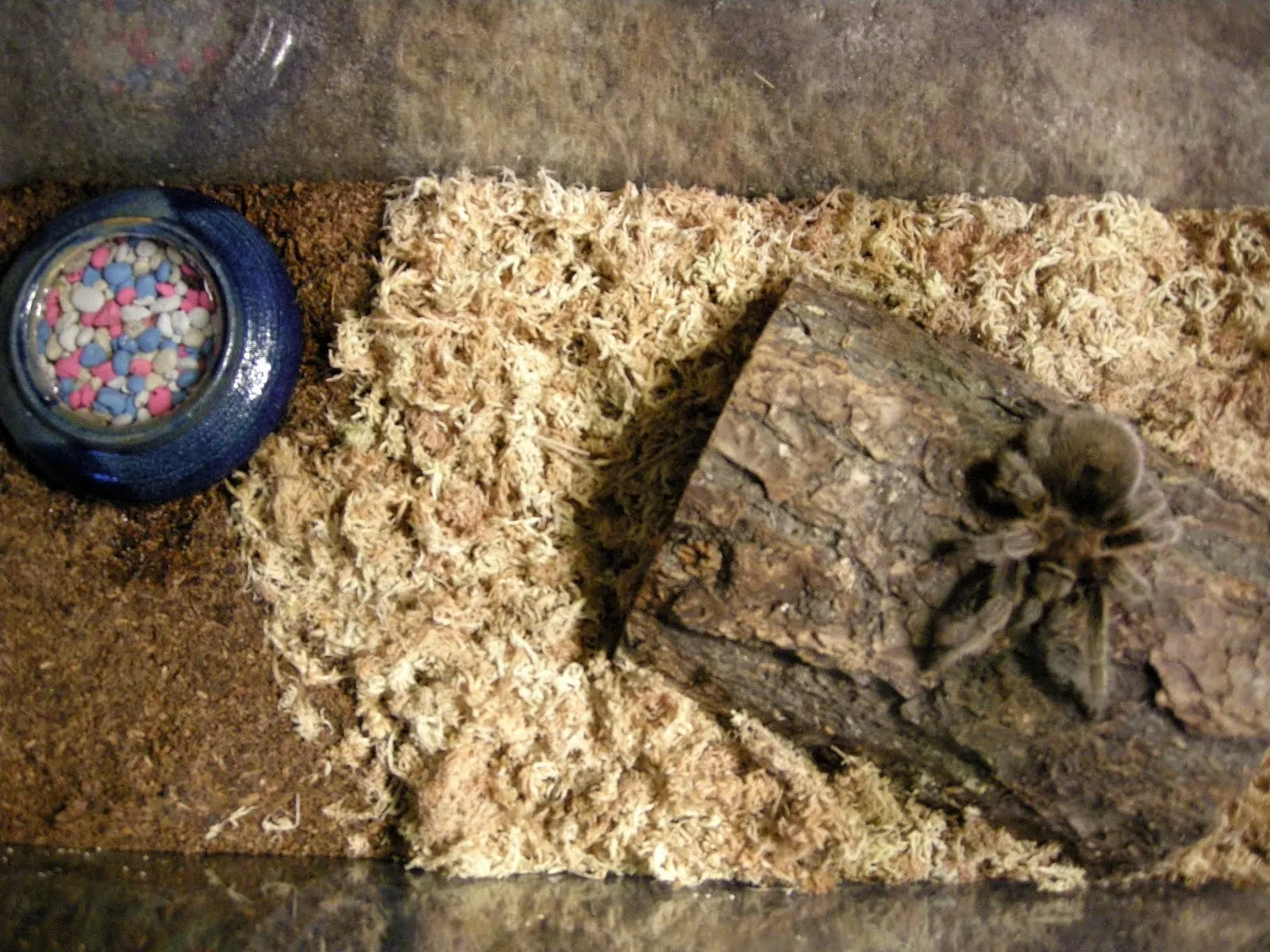Choosing the Right Tarantula for Easy Care
Embarking on the journey of tarantula ownership is an exciting experience, but it’s crucial to start with the right species to ensure an easy and enjoyable care experience. Not all tarantulas are created equal when it comes to their temperament and specific needs. Selecting a species known for its docile nature and adaptability to captive environments will significantly reduce the complexities of tarantula care. Beginning with a species well-suited for beginners sets the foundation for a positive experience, allowing you to learn the basics without being overwhelmed by challenging behaviors or intricate requirements. This initial step is paramount in ensuring your success and the well-being of your new pet. Prioritizing species that are known to be less prone to defensive behaviors, like biting or kicking hairs, creates a safer and more manageable interaction for both you and your tarantula.
Consider Temperament
Temperament is a critical factor when selecting a tarantula. Some species are naturally more docile and less likely to exhibit defensive behaviors, making them ideal for beginners. Consider species known for their calm demeanor and willingness to tolerate handling (although handling is generally discouraged). Species like the Chilean Rose Hair tarantula are often recommended for their relatively calm temperaments. Researching the specific temperament of the species you are considering is essential to determine the likelihood of defensive behaviors. Understanding the tarantula’s potential reactions to handling, disturbances, and enclosure maintenance will help you avoid stressful situations and ensure a safer interaction. Prioritize species that are known to be less prone to defensive behaviors, such as biting or kicking hairs, to create a safer and more manageable interaction for both you and your tarantula.
Research Species-Specific Needs

Different tarantula species have unique environmental requirements, dietary needs, and growth rates. Thorough research is crucial before bringing a tarantula home. Understand the specific habitat parameters, including temperature, humidity, and substrate preferences, to create a suitable living environment. Investigate the ideal diet, feeding frequency, and appropriate prey items. The lifecycle of the chosen tarantula must be considered as well. Some species have faster growth rates than others, which can impact enclosure size and feeding requirements over time. Knowledge of these specific needs empowers you to make informed decisions about your tarantula’s care. Online resources, books, and experienced keepers provide valuable information to guide your research and ensure you are prepared to provide the best possible care. This proactive approach will also help you recognize the signs of potential health issues and address them promptly.
Setting Up the Perfect Tarantula Habitat
Creating the perfect habitat is a cornerstone of easy tarantula care. A well-designed enclosure mimics the tarantula’s natural environment and provides essential elements for its well-being. Proper housing offers not only a comfortable living space but also promotes the tarantula’s health and longevity by catering to its behavioral needs. The enclosure should be appropriately sized to accommodate the tarantula’s adult size. Furthermore, the setup plays a crucial role in regulating temperature and humidity, which are critical for maintaining the tarantula’s health. The correct environment is essential in facilitating the tarantula’s molting process and prevent complications. By setting up the habitat correctly from the beginning, you significantly reduce potential issues and make tarantula care easier in the long run.
Enclosure Size and Type
Choosing the right enclosure is fundamental for tarantula care. The size of the enclosure should be appropriate for the tarantula’s size, allowing for adequate space to move around and explore. Avoid enclosures that are too large, as this can make it difficult for the tarantula to find its food and can increase the risk of falls. For terrestrial species, a wider enclosure is generally preferred, while arboreal species benefit from taller enclosures that accommodate climbing. Consider whether your chosen tarantula species is terrestrial, arboreal, or fossorial. This helps determine the appropriate enclosure type and dimensions, which play a crucial role in the tarantula’s comfort and safety. Glass or acrylic enclosures are popular choices due to their transparency, allowing you to easily observe your tarantula. Ensure the enclosure has secure ventilation to maintain air quality and prevent the buildup of humidity. A well-chosen enclosure helps your tarantula thrive and adds aesthetic value to your space.
Substrate Selection

The substrate forms the foundation of the tarantula’s habitat, providing a comfortable and functional surface. The best substrate for easy tarantula care should be absorbent, non-toxic, and able to hold moisture to maintain proper humidity levels. Coconut fiber (coco coir) is a popular choice, as it provides excellent moisture retention and is readily available. Sphagnum moss can also be added to the substrate to help maintain humidity, especially for species with higher humidity requirements. Avoid substrates that can be harmful, such as cedar or pine shavings, as these woods can be toxic to tarantulas. The substrate should be deep enough to allow for burrowing in terrestrial species and should be replaced regularly to prevent mold and bacterial growth. Consider the species specific needs. Some tarantulas have particular preferences, such as a mixture of soil and sand, to replicate their natural environment. Choosing a suitable substrate is essential for your tarantula’s comfort and helps with molting and overall health.
Temperature and Humidity Control
Maintaining the correct temperature and humidity levels is vital for your tarantula’s health and well-being. Most tarantulas thrive in a temperature range of 75-85°F (24-29°C). Use a thermometer to monitor the temperature within the enclosure and adjust the heat source accordingly. Humidity requirements vary depending on the species, but generally, most tarantulas require a humidity level between 60-80%. Regularly misting the enclosure with dechlorinated water can help maintain the proper humidity levels. Use a hygrometer to monitor humidity levels and adjust your misting schedule as needed. Poor temperature or humidity can lead to dehydration, molting problems, and other health issues. Make sure to avoid direct sunlight. By providing the right climate, you create a healthy environment for your tarantula. Consider the species of tarantula and adjust accordingly.
Providing Optimal Nutrition
Proper nutrition is essential for the health, growth, and molting of your tarantula. Providing a balanced and appropriate diet is a crucial aspect of easy tarantula care. This means providing prey items that meet the nutritional needs of the tarantula. Choose prey items that are readily available and easy to manage, such as crickets, mealworms, and roaches. The size of the prey should be appropriate for the tarantula’s size, ensuring it can easily capture and consume the food. Furthermore, offering a varied diet can contribute to the tarantula’s overall health and well-being. Supplementing the diet with vitamins and calcium can also be beneficial to prevent nutritional deficiencies. Regular feeding and close observation of your tarantula’s feeding habits will enable you to adjust its diet to provide the necessary nutrients to ensure its optimal health and well-being. You can easily ensure your tarantula is eating well and receiving adequate nutrition, reducing the likelihood of health issues and promoting a long and healthy life.
Feeding Frequency

The frequency of feeding your tarantula depends on its age, size, and species. Spiderlings and juvenile tarantulas typically need to be fed more frequently than adults. Spiderlings may need to be fed every other day or every few days, while adults can be fed once a week or even less often. Observe your tarantula’s behavior and body condition to determine the appropriate feeding frequency. A well-fed tarantula will have a plump abdomen, whereas a tarantula that is too thin may be underfed. Remove any uneaten prey items within 24 hours to prevent the buildup of waste and potential hazards. The amount of food offered at each feeding also depends on the tarantula’s size and appetite. Adjust the feeding schedule as needed based on your observations of your tarantula. Feeding frequency is a key factor in easy tarantula care. Overfeeding can lead to obesity, while underfeeding can stunt growth and compromise health. Adjust your feeding schedule as needed based on your observations.
Appropriate Prey Selection
Selecting the right prey items is a vital aspect of providing optimal nutrition for your tarantula. Crickets, mealworms, and roaches are common and easily accessible options. The size of the prey should be appropriate for the tarantula’s size; the general rule is to offer prey no larger than the tarantula’s body length. Variety in the diet is also essential. Supplementing with other insects, such as waxworms or superworms, can add nutritional diversity. Dusting prey items with calcium and vitamin supplements can prevent nutritional deficiencies. Avoid feeding prey that have been exposed to pesticides. Make sure the insects are gut-loaded before feeding to improve their nutritional value. By carefully selecting and preparing prey items, you can ensure that your tarantula receives all the essential nutrients for healthy growth and development. Providing a varied and well-balanced diet plays a crucial role in the tarantula’s overall health and helps prevent potential deficiencies.
Water and Hydration
Providing fresh water is a critical component of easy tarantula care. Tarantulas need a constant supply of clean water to stay hydrated. You can provide water in a shallow water dish, such as a bottle cap or a small dish, especially for larger species. The water should be shallow enough to prevent drowning. Check the water dish daily and refill it as needed, ensuring it is always clean and free of debris. Another option is to mist the enclosure regularly. This is particularly beneficial for species that prefer higher humidity levels and provides a source of water for them to drink. Monitor your tarantula’s behavior. If it appears lethargic or dehydrated, you may need to increase the frequency of misting or ensure it has easy access to water. Providing clean water is essential to ensure the tarantula is healthy and well-hydrated. Make sure to use dechlorinated water. Dechlorinated water is crucial for the tarantula’s health.
Essential Tarantula Care Practices

Certain routine practices make tarantula care easy and ensure the well-being of your pet. Regular tank maintenance and recognizing potential health issues are crucial. Proper handling techniques and interaction with your tarantula require knowledge of their needs, temperament and behaviors to avoid stress for the animal. Regular cleaning and maintenance, coupled with an understanding of common health issues, will provide a stable and healthy environment for your tarantula.
Regular Tank Maintenance
Regular tank maintenance is essential for maintaining a healthy and clean environment for your tarantula. Spot clean the enclosure at least once a week. Remove any uneaten prey items, fecal matter, and shed exoskeletons. This prevents the buildup of bacteria and odors and keeps the enclosure hygienic. The frequency of spot cleaning will depend on the species and the amount of waste produced. Full enclosure cleaning should be done periodically. Replace the substrate every few months, or more frequently if it becomes soiled or starts to smell. When cleaning the enclosure, remove the tarantula carefully to a temporary holding container. Clean the enclosure with warm water and a mild, pet-safe disinfectant. Ensure the enclosure is completely dry before returning the tarantula and adding fresh substrate. A clean enclosure promotes good health for your tarantula and makes care much easier.
Handling and Interaction
While tarantulas are fascinating creatures, they are best observed rather than handled frequently. Handling can stress the tarantula and potentially lead to bites or other injuries. Generally, it’s best to avoid handling your tarantula unless absolutely necessary, such as when moving it for enclosure maintenance or for veterinary care. If you must handle your tarantula, do so slowly and gently. Approach the tarantula calmly and allow it to walk onto your hand. Avoid sudden movements or loud noises, as these can startle the tarantula. Always support the tarantula’s body and avoid dropping it. After handling, wash your hands thoroughly to remove any potential allergens. Some tarantula species are more prone to kicking hairs or biting than others. Be aware of your tarantula’s species-specific behaviors and avoid handling it if you are unsure of its temperament.
Recognizing and Addressing Health Issues

Knowing the signs of potential health issues is an important part of tarantula care. Observe your tarantula regularly for any changes in behavior, appetite, or appearance. Common health issues include dehydration, molting problems, and parasites. Dehydration can be identified by a shriveled abdomen. Increase humidity and provide access to fresh water if you suspect dehydration. Molting issues can arise if the humidity is too low or if the tarantula has difficulty shedding its exoskeleton. Provide a humid environment and avoid disturbing the tarantula during molting. Parasites are less common in captive tarantulas but can occur. If you notice any unusual behavior or abnormalities, such as mites, seek advice from a veterinarian or experienced tarantula keeper. Early detection and treatment of health issues can often prevent more serious problems. Monitoring your tarantula will help ensure a long, healthy life.
Enhancing Your Tarantula’s Environment
Creating an enriching environment is important for tarantula’s well-being, stimulating their natural instincts and reducing stress. This means providing the tarantula with options for hiding, climbing, and exploring. Hides and enrichment should be implemented with safety in mind, avoiding any hazards. The goal is to create an environment that mimics its natural habitat as closely as possible, which will encourage your tarantula to thrive. By providing a stimulating and secure environment, you contribute to the tarantula’s physical and mental health, thus making its care more engaging and rewarding.
Providing Hides and Enrichment
Tarantulas are naturally shy creatures and benefit from having places to hide and feel secure. Provide hides in the enclosure, such as cork bark, half logs, or artificial hides. These hiding places provide a sense of security and reduce stress. Arrange the hides so that the tarantula can easily access them. Enrichment in the form of climbing structures, such as branches or artificial plants, can also be added to the enclosure, especially for arboreal species. Enrichment provides opportunities for the tarantula to explore and express natural behaviors. Provide a varied and stimulating environment to enhance the tarantula’s quality of life. Arrange the decor in a way that allows for easy access for the tarantula. Make sure the decor does not cause any injuries and does not take up too much space.
Decorating with Safety in Mind

When decorating your tarantula’s enclosure, prioritize safety to prevent potential hazards. Avoid sharp or jagged decorations that could injure the tarantula during its movements or molting. Ensure all decorations are securely placed and will not tip over or collapse, potentially trapping or harming the tarantula. Use non-toxic materials and avoid any decorations that could leach chemicals into the environment. Ensure proper ventilation and access to fresh water. The substrate itself, whether it is coconut fiber or soil, provides natural enrichment for burrowing species. The focus should be on providing a safe and secure environment that also caters to the tarantula’s natural needs. Choosing decorations that mimic the natural environment can also enrich the enclosure.
Final Thoughts on Easy Tarantula Care
Easy tarantula care is achievable with the right knowledge and preparation. Starting with a suitable species, providing a well-designed habitat, proper nutrition, and practicing essential care routines contribute to a rewarding experience. By following these tips and being attentive to your tarantula’s needs, you can enjoy the fascinating world of these amazing creatures. Remember that tarantulas are relatively low-maintenance pets. However, it’s crucial to invest time in understanding their specific needs and providing a comfortable and stimulating environment. With these easy tarantula care tips, you can enjoy the rewarding experience of owning a tarantula. Enjoy the process and the companionship these unique creatures provide.
